This is a Penti II originally made by VEB Welta-Kamera-Werk in East Germany between the years 1961 and 1977. Welta would be absorbed into VEB Pentacon in 1964 while this camera was still in production, so many were made after the merger and were then called the Pentacon Penti II. The Penti II was an upgraded model from the original Penti with a new body, lens, and adding a coupled selenium cell light meter. These cameras have a trademark gold front and rear plate along with a gold trimmed Meyer-Optik Domiplan lens. The middle part of the body came in a variety of colors like black, white, teal, and even pink. The camera used a unique SL cassette system which used regular 35mm double perforated film, but in a cassette to cassette configuration.
Film Type: 18mm x 24mm AGFA Rapid / SL Cassette System
Lens: 30mm f/3.5 Meyer-Optik Domiplan V coated 3-elements
Focus: 1 meter to Infinity
Viewfinder: Scale Focus with 30mm Projected Frame Lines
Shutter: Twin-Blade Metal Leaf
Speeds: B, 1/30 – 1/125 seconds
Exposure Meter: Coupled Selenium Cell w/ viewfinder match needle
Battery: None
Flash Mount: Cold Shoe and PC M and X Flash Sync
Weight: 278 grams
Manual (similar model, in German): http://www.cameramanuals.org/pdf_files/welta_penti_i.pdf
How these ratings work |
The Penti II is a compact and very distinct looking camera made in East Germany in the 1960s. It uses a cassette to cassette style of film which is no longer available, but luckily, loading regular 35mm film into them is simple. Once loaded, the camera is extremely portable and easy to shoot through the entire roll. The Domiplan triplet is capable of good, but not spectacular shots. Although this model does have a selenium light meter, I found it difficult to use so I just relied on Sunny 16. Overall, the camera’s portability and good looks won me over. It’s not one I’ll regularly use over and over, but it’s something I am happy to have in my collection and one that I feel comfortable recommending. | ||||||
| Images | Handling | Features | Viewfinder | Feel & Beauty | History | Age | |
| 1 | 2 | 1 | 1 | 2 | 0 | 20% | |
| Bonus | none | ||||||
| Final Score | 8.4 | ||||||
History
The camera industry in post war East Germany was quite tumultuous with the Soviet government controlling nearly every aspect of design, production, and sales. Prior to the war, the Dresden area of Germany was home to a huge number of camera and optics companies. Brands such as Zeiss-Ikon, KW, Welta, Balda, and many others called this area home, but after the war, would be merged, absorbed, and in some cases shut down entirely.
Although these East German camera companies would become less and less innovative as time went on, there were still a few bright spots in camera design. One of the bright spots was the Contax SLR. Designed by two Zeiss employees, Wilhelm Winzenburg and Walter Henning, the new camera was a handsome and innovative design, featuring a fixed pentaprism viewfinder, and using the all new M42 screw mount. It was a great success staying in production from September 1949 until March 1962.
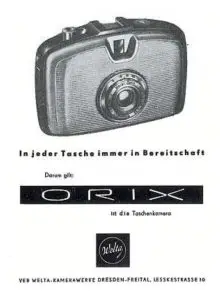
Walter Henning would remain with Zeiss-Ikon throughout most of the 1950s, but as was typical of state run entities, talent was often shuffled between different companies and by 1958, Henning found himself working for VEB Welta-Kamera-Werk in Frietal, a nearby suburb of Dresden. While working at Welta, Henning would design a compact, and unusually stylish half frame camera called the Orix.
The Welta Orix would shoot 18x24mm images on what was then called SL cassette film. The SL cassette was essentially the same as AGFA’s Rapid system and was a cassette to cassette 35mm standard in which film would travel into a take up cassette without the need to rewind at the end of the roll. Normal Rapid / SL cassettes were limited to twelve 24x36mm exposures, but the Orix’s half frame size meant that at least 24 exposures could be made on a single roll.
The Orix had a distinct gold plated front and back cover, along with a gold trimmed Meyer-Optik Trioplan f/3.5 lens, but the body was available in a variety of different colors, including black, white, teal, and pink. In some ways, the camera resembled a ladies makeup compact, and whether this was a coincidence or not, it’s plausible the camera was created to appeal to women.
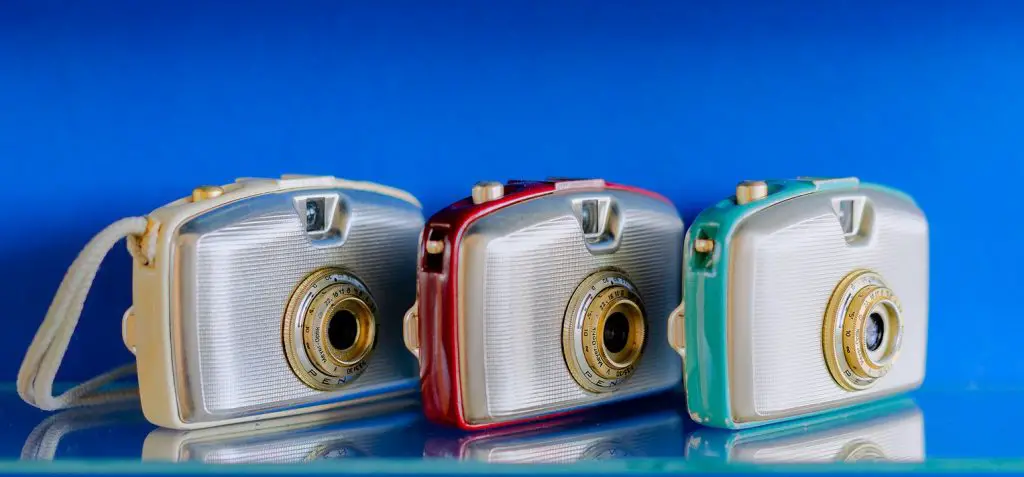
The Orix was available only in 1958, and was rebranded as the Penti afterwards. I could not find any information about why the name was changed. There was an earlier folding plate camera made by ICA called the Orix, but since ICA was one of the companies that was merged to create Zeiss-Ikon who also would later merge with VEB Welta-Kamera-Werk to become VEB Pentacon Dresden, I don’t think it had anything to do with any sort of trademark issue.
The original Welta Penti continued to be made until 1961, at which time the body was redesigned adding a selenium light meter and a new multi-coated Domiplan f/3.5 lens which replaced the earlier Meyer-Optik Trioplan. In 1963, a meter-less version called the Penti I would be released featuring the same body and lens.
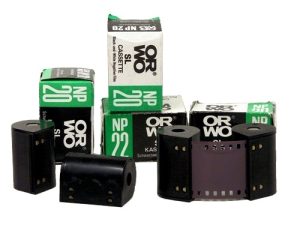
The Penti II was quite successful, staying in production until 1977. I do not believe these cameras were exported to the United States as they do not appear in any of the magazines or price guides I have from the era. I also have no idea how much the camera cost new, or how many were built. The long life and vast number for sale on eBay suggest quite a few. The SL-cassette system would eventually earn the nickname as the “Penti-cassette” but I don’t think this was ever an official change, more that it was the most popular camera to use it and people just associated the two.
Today, the Penti series shows up frequently in collections around the world. Cameras like early Kodak folders and the Coronet Midget that came in a variety of colors seem to be popular for completists who want one of each type. Even if you only have one Penti in your collection, it’s hard to deny the small camera’s beauty. If you’re a user like me, then the half frame format, using the Rapid (or whatever name you want to give it) cassette system is an interesting proposition. Whatever the reason, these things are great examples of mid century East German camera design, and usually are quite affordable regardless of your budget.
My Thoughts
When looking for a rare camera, sometimes prices can be a bit high, and when you are on a limited budget like I am, you have to get creative to help offset the costs of a high price, or expensive shipping. Such was the case when I wanted to acquire a nice working Pentacon FM SLR back in the spring of 2017. I found one for sale from a seller in Lithuania, but shipping was high. Why spent a lot of money on shipping for one camera, when you can spend marginally more to get three?!
So that’s what I did, and of that three camera lot, this Penti II is the last for me to review. I previously posted my thoughts on that Pentacon FM and the Pouva Start but this Penti took a little longer for me to get around to.
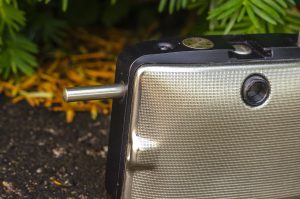
The Penti II is a really neat little camera and I can absolutely see why it was in production for a decade and a half. Its compact size, good looks and decent lens make it quite a capable little camera. Of course, this being a German camera, there has to be some quirks. The most obvious of which is the film advance plunger that sticks out of the side of the camera after firing the shutter. This post is similar to the one on top of the Voigtländer Vitessa camera, except unlike that camera, the post on the Penti stays retracted after advancing the film. Also unlike the Vitessa, the plunger only advances the film, it does not set the shutter.

The top plate of the camera features from left to right, the flash sync port, exposure counter, accessory cold shoe, and threaded shutter release button. Also visible from this angle is the focus, shutter speed, and aperture scales around the lens. Although tiny, being able to see all three settings for the camera from top down is very convenient.

On the bottom, there’s not much to see, just the centrally located 1/4″ tripod socket, a Pentacon logo with the words “Made in GDR”, and the stamped serial number. Earlier models made before Welta merged with Pentacon will have a Welta logo on the bottom plate instead of the Ernemann tower.
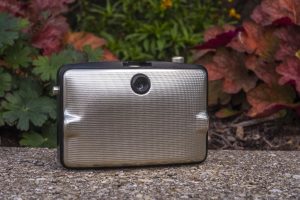
The back of the camera is quite barren, featuring only the viewfinder. On either side of the door are two flared protrusions which act as finger grips for removing the door. There is no hinge on this camera, rather the door is held on by a spring loaded clip on either side. To open the camera, you grip both sides of the camera with your thumb and index finger and just pull. It takes a surprising amount of effort, but a firm, quick tug will completely remove the door from the camera.

The film compartment of the Penti II is perhaps where the most explanation is needed. First, you’ll notice a knurled plastic wheel to the left of the viewfinder. This is the exposure counter reset and must be done with the film back off.
After that, the most obvious thing you’ll notice is that this camera doesn’t use regular 35mm film. It uses a cassette to cassette system officially called “SL Cassettes” but it was really just a rebadge of AGFA’s old cassette to cassette system first developed for the Karat in the 1930s. Unlike regular Kodak 135 format film where film comes in a pre-loaded cassette, is pulled out while shooting, and then rewound back into the cassette at the end, with the Penti, a loaded cassette is inserted in the left chamber, and the film is pushed into an empty cassette on the right. There are no spools or anything to attach the film to. This system was thought to be easier than regular 35mm film as it was impossible for the film to tear off at the end of the roll, and it allowed for mid-roll changes without ruining previously exposed images.
Rapid or SL cassettes are no longer sold, but the good news is that the film used in them is exactly the same as regular 35mm film, so you can simply load your own with a regular roll of film. A word of warning though is that original Rapid cassettes only used a length of film long enough for 12 full frame or 24 half frame shots, so you’ll want to make sure you don’t attempt to shove too long of a strip of film into the cassette. I’ll cover how this is done later in this article. For now, just trust me when I say that it’s very easy, and something anyone can do, even if you’ve never hand rolled film before.

The viewfinder is just barely big enough to be useful. This being a compact half frame camera, its small size is expected. Looking through it with prescription glasses, you can still make out the edges of the projected frame lines which indicate the 30mm field of view. Also barely visible on the right are two exposure match needles which are a bit confusing to use. In the image to the left, I intentionally didn’t line up the two needles so that they are easier to see.
One of the two needles is permanently coupled to the meter and will move to an arbitrary position in between two dots that indicate proper exposure. A second needle is connected to both the shutter speed and aperture rings around the lens. The idea is to get the two needles to overlap, which then is when you’ll have proper exposure. There’s two problems with this. The first is that it’s not obvious which needle is which. Only when playing with the shutter speed or aperture rings can you make sense of it. Second, is that if your meter isn’t working, or is slow, the meter needle goes off the scale and is hard to see. Although the meter on this example responded to light, I did not trust it and shot my first roll using Sunny 16.
The Penti II looks like no other camera made. Functionally, it is similar to the original Olympus Pen half frame camera, except with a meter. Both cameras had similarly wide focal length lenses with full manual control through limited shutter speeds. Although the original Pen used regular 35mm film, Olympus did make a Pen Rapid that used the same Rapid cassette to cassette system as the Penti II, bridging the gap even further.
Loading 35mm Film Into Rapid Cassettes
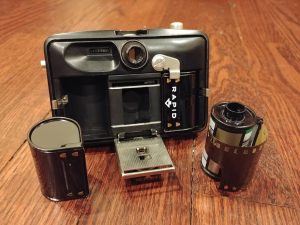 The style of film cassette used in cameras like the Penti has not been available for decades, but thankfully, it is extremely easy to reload regular 35mm film into them. You are limited to no longer than a standard 12 exposure roll of 35mm film. You can physically fit a longer roll into the cassette, but it will be too tight and will not advance properly. I strongly recommend against anything longer than a 12 exposure roll. The only thing you’ll need are two empty Rapid cassettes. These don’t have to be from a Penti, but can be from any camera ever made that uses Rapid cassettes, even the old AGFA Karat cassettes will work fine.
The style of film cassette used in cameras like the Penti has not been available for decades, but thankfully, it is extremely easy to reload regular 35mm film into them. You are limited to no longer than a standard 12 exposure roll of 35mm film. You can physically fit a longer roll into the cassette, but it will be too tight and will not advance properly. I strongly recommend against anything longer than a 12 exposure roll. The only thing you’ll need are two empty Rapid cassettes. These don’t have to be from a Penti, but can be from any camera ever made that uses Rapid cassettes, even the old AGFA Karat cassettes will work fine.
Step 1:
Cut the leader off your 12 exposure roll of 35mm film so that you have a flat edge.
Step 2:
This step must be done in complete darkness. Any dark room or a film changing bag will work. Gently shove the edge of the film into the felt lined slit on one of the Rapid cassettes. It should freely feed into the cassette with little to no resistance. Once you feel it feeding through, gently feed the rest of the 12 exposure roll in. Try not to touch the emulsion (back) side of the film too much. Gently gripping the edges by the sprockets should be enough.
Step 3:
Once you can feel all of the film is in the Rapid cassette, cut the film out of the 35mm cassette with scissors. You can turn the lights back on now.
Step 4:
Take the film that is now sticking out of your freshly loaded Rapid cassette and feed it into the other cassette. You don’t need to stick much in there, 6-8 sprocket holes should be enough. With the Penti, it helps to have the other cassette already installed into the take up (right) side of the camera. That little L shaped arm helps hold the take up cassette into place. Once the take up cassette is loaded, put the supply cassette into the left side cavity, fold the pressure plate, and then re-attach the door. Advance the camera at least one exposure to bring out unexposed film for shooting.
And that’s it. For anyone whose shy about any sort of “camera hacking” this is pretty much the easiest type of film adaptation you can do, even easier than respooling 120 film onto 620 spools!
My Results
I was running low on good 12-exposure rolls of film so for my first roll through the Penti, I used some expired Polaroid 200 film that I had. This is the same film that I had used in the Agat 18K review, and I knew it exposed properly but would have washed out colors and a bit more grain, but I felt it should give me a good enough idea of what the camera was capable of. I followed the same instructions I typed above to load in the film and went shooting.
My results from the Penti II were as expected. The Polaroid film aged nicely, showing a slightly elevated level of grain and some wonderfully muted colors that enhanced the vintage look from this camera. As expected from a triplet lens, center sharpness is quite good with what I would consider to be a slightly higher level of softness near the edges. Vignetting is visible in most outdoor scenes, but it’s nothing too distracting.

Two issues came up while using the Penti II, the first is that the film advance plunger frequently would hit my left hand while shooting. It is clear that Voigtländer was wise to put the plunger on their Vitessa on the top plate of the camera to avoid this. It didn’t negatively impact my images as the plunger only comes out after the shutter has fired, it was just annoying.
The second issue, which was something I didn’t expect to see from a camera made in the 1960s, is that it completely lacks any sort of double image prevention. The act of setting and firing the shutter is done entirely with the shutter release. You can repeatedly fire the shutter over and over again by continuing to press the shutter release without advancing the film. I ended up double exposing several images like the one to the right during my first roll.
Despite these two challenges, I still very much enjoyed shooting the Penti II. I generally like most half frame cameras for their economy, but when combined with full manual control in a compact body with a decent lens and a match needle exposure meter, the few complaints I had didn’t ruin the experience for me. As far as cameras designed for extinct film go, reloading Rapid / SL cassettes is super easy, so this is one I feel confident recommending to beginner and veteran collectors alike!
Additional Resources
http://camera-wiki.org/wiki/Penti
http://www.analogadvocates.com/page/penti

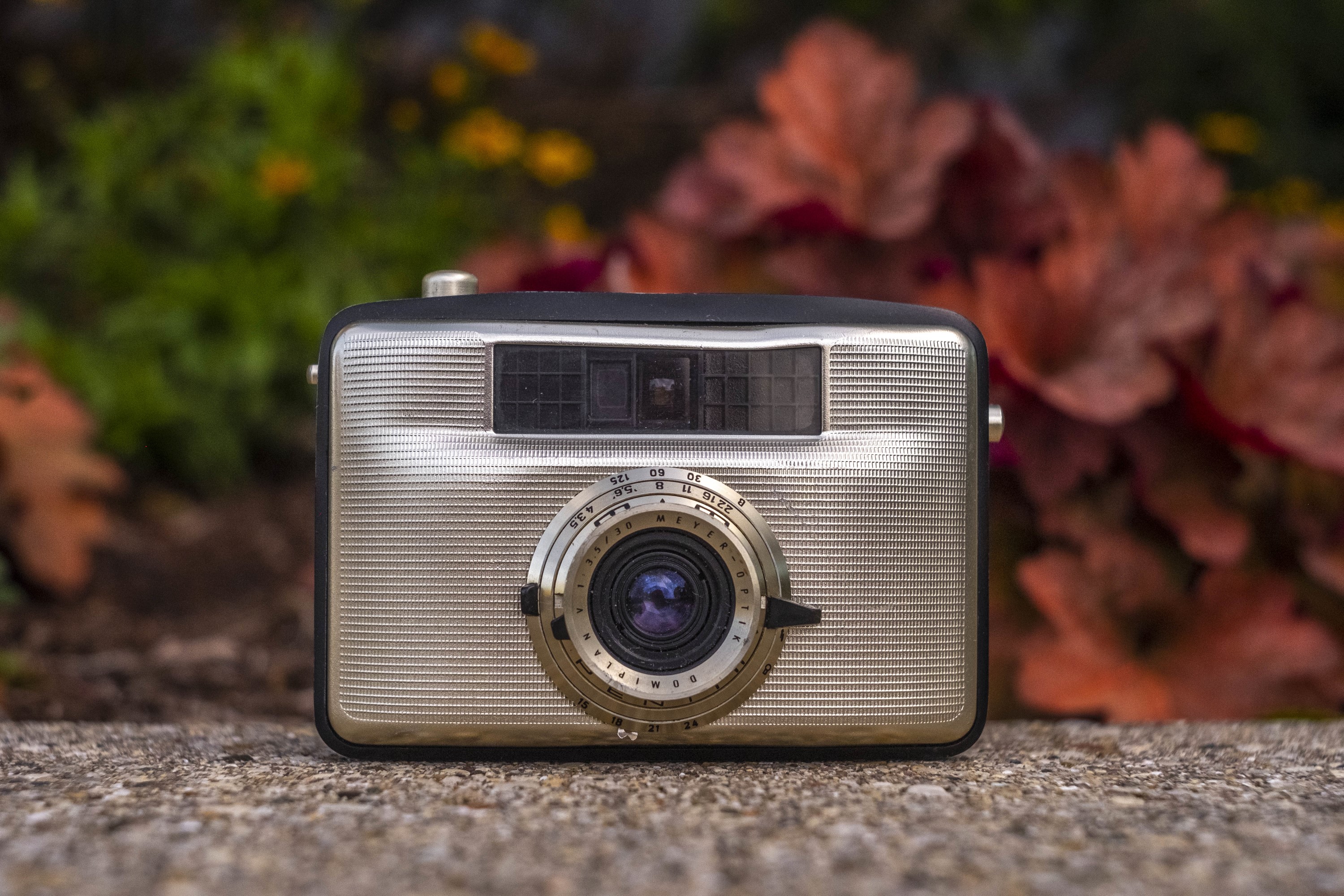
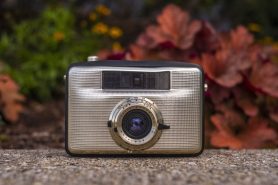
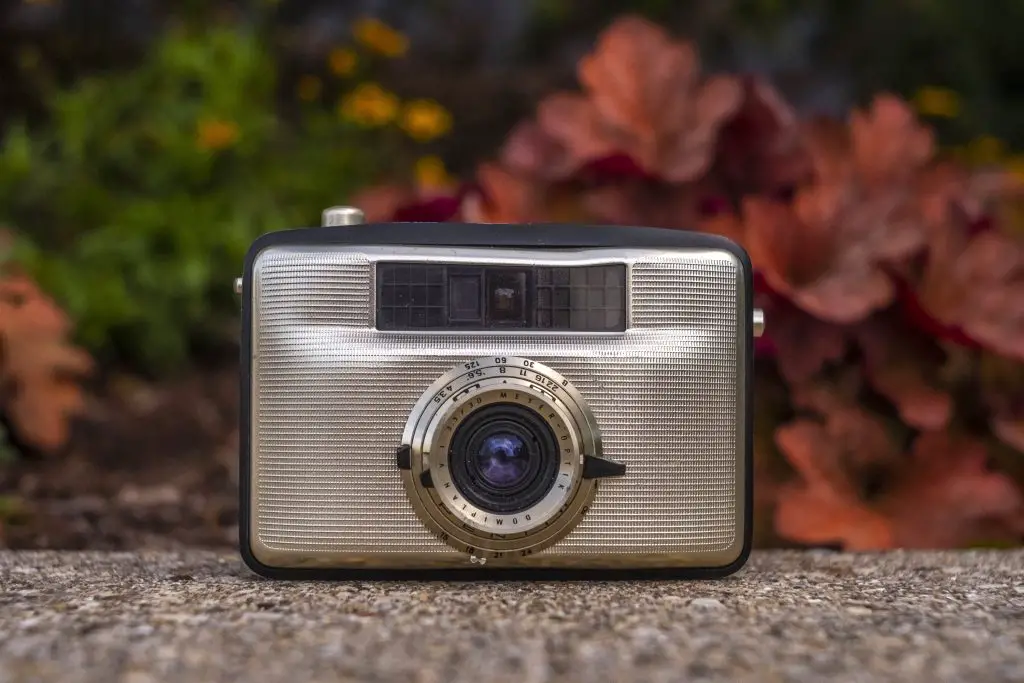














Another excellent, very thorough review right down to details on how to get around the cassette to cassette feed.The curvaceous design and the lolly colours are absolutely redolent of the 1960s to the extent that the camera could be mistaken for a compact transistor radio of the era, deliberately I’m sure, and would look perfect in a Modernist interior. I’d never encountered this camera, so thank you!
Hi. Nice review! I would like to comment on two things:
– My Penti II has double exposure prevention. Without plunger travel out and back in it’s not possible to shot again. From the photos of your camera it seems it was dropped – maybe mechanism was damaged.
– Your description of the light meter indicator isn’t fully correct. Shutter speed selector is coupled to the “correct exposure indicator” needle. The light meter needle should cover (match) the “correct exposure indicator”. The aperture selector is coupled to the light meter directly and influences light meter needle response to light (changes electrical resistance of the meter circuit probably).
Ziga, thanks for the kind words! I just double checked mine again and it definitely has no double image prevention of any kind. It’s plausible that mine has been damaged at some point, or maybe some variants of this camera don’t have it. Whichever is true, who knows why it’s not working, but it’s definitely not there on mine!
And thanks for the clarification on how the exposure meter works. I did not rely on it in mine, so I was only guessing how it works. It’s always good to know for sure though.